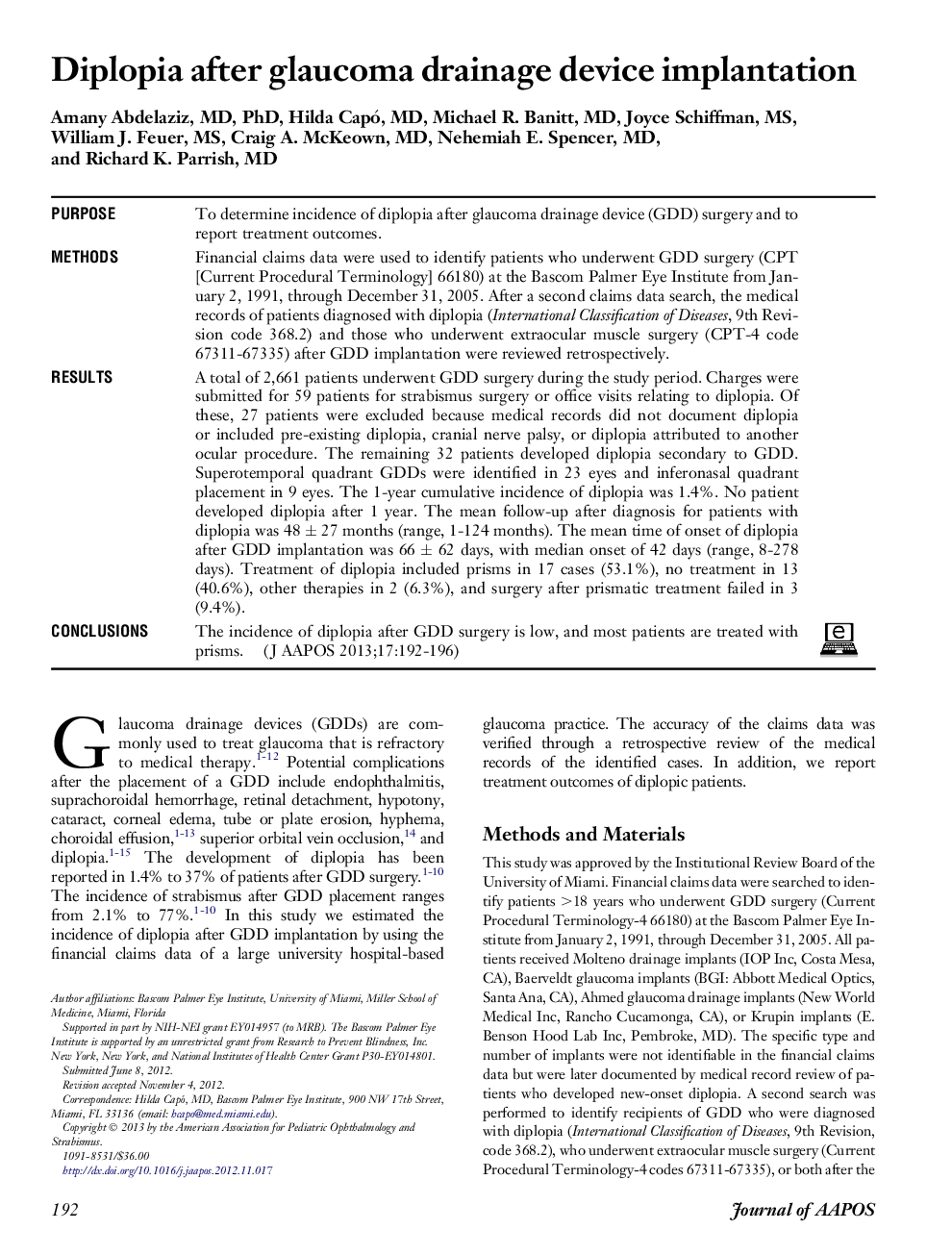| Article ID | Journal | Published Year | Pages | File Type |
|---|---|---|---|---|
| 4013801 | Journal of American Association for Pediatric Ophthalmology and Strabismus | 2013 | 5 Pages |
PurposeTo determine incidence of diplopia after glaucoma drainage device (GDD) surgery and to report treatment outcomes.MethodsFinancial claims data were used to identify patients who underwent GDD surgery (CPT [Current Procedural Terminology] 66180) at the Bascom Palmer Eye Institute from January 2, 1991, through December 31, 2005. After a second claims data search, the medical records of patients diagnosed with diplopia (International Classification of Diseases, 9th Revision code 368.2) and those who underwent extraocular muscle surgery (CPT-4 code 67311-67335) after GDD implantation were reviewed retrospectively.ResultsA total of 2,661 patients underwent GDD surgery during the study period. Charges were submitted for 59 patients for strabismus surgery or office visits relating to diplopia. Of these, 27 patients were excluded because medical records did not document diplopia or included pre-existing diplopia, cranial nerve palsy, or diplopia attributed to another ocular procedure. The remaining 32 patients developed diplopia secondary to GDD. Superotemporal quadrant GDDs were identified in 23 eyes and inferonasal quadrant placement in 9 eyes. The 1-year cumulative incidence of diplopia was 1.4%. No patient developed diplopia after 1 year. The mean follow-up after diagnosis for patients with diplopia was 48 ± 27 months (range, 1-124 months). The mean time of onset of diplopia after GDD implantation was 66 ± 62 days, with median onset of 42 days (range, 8-278 days). Treatment of diplopia included prisms in 17 cases (53.1%), no treatment in 13 (40.6%), other therapies in 2 (6.3%), and surgery after prismatic treatment failed in 3 (9.4%).ConclusionsThe incidence of diplopia after GDD surgery is low, and most patients are treated with prisms.
